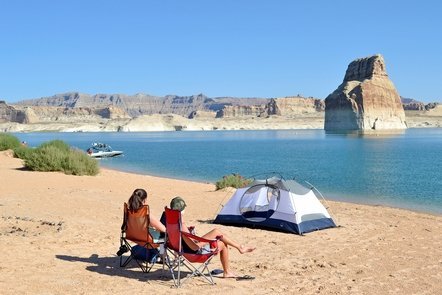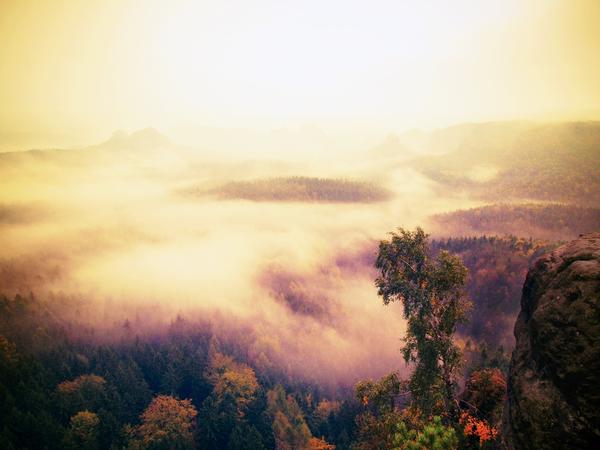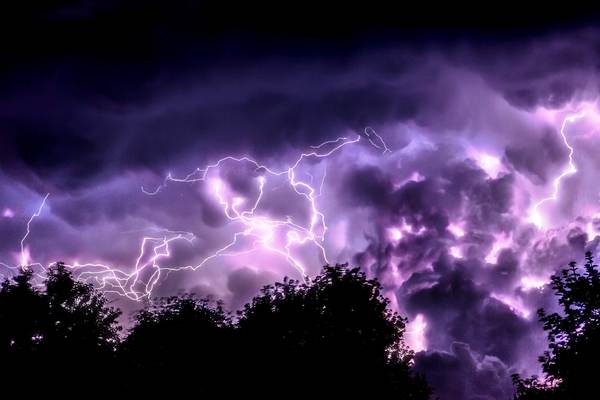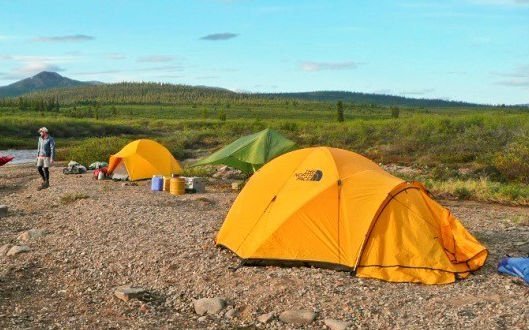A summer camping trip is almost a rite of passage, but it is so much more than that. Camping is a great way for families of any size to reconnect. There will be plenty of space and things to do for everyone to enjoy the privacy and solitude they will need, but they will also be spending time together. The most important factors for a successful camping trip are location and, gear, weather for summer camping, and attitude, and the most important ones are the two that no amount of money can change.

If you have the good fortune to camp in an area with little or no cellular WiFi coverage, the family will have to turn to each other for entertainment, and will probably be delightfully surprised by how much they like one another.
Learning to appreciate nature is the usual selling point for a camping trip, but the real value of spending time away from home is learning to appreciate the comforts of home.
This doesn’t mean that you should be roughing it. That attitude is OK for military units on maneuvers or boy scouts seeking adventure, but it can sour the experience for some family members. Rather than roughing it, the family camping trip should be an exercise in smoothing it. No, you may never be able to completely recreate all of the comforts of home, but with a little creativity and surprisingly little money, you can come close. Even if you don’t, everyone can have a lot of fun trying together.
Some fear that camping is out of reach for their family because it is such an expensive pastime, and it is certainly possible to invest a small fortune in your kit, not to mention traveling to your camping destination. However, just about every city-dweller in America lives within a couple hour’s drive of a National Forest or BLM land (where it is free to camp) or a scenic state park, and at the end of the day, the trees and the squirrels are not going to care if your gear is old, improvised, used, or just out of fashion.
Take the Weather with You
The most important factors for a successful camping trip are location and, gear, weather for your summer camping, and attitude, and the most important ones are the two that no amount of money can change. Attitude is arguably the most important ingredient, if you and your family are ready to have fun, then you will, but there are few things that can sour attitudes faster than rotten weather.
The weather campers or anyone else for that matter is a combination of wind, temperature, and rain. A more scientifically accurate picture would be wind, temperature, and moisture because this considers humidity as well as precipitation. The thought that your precious camping time can be ruined because of rainy conditions is obvious, but the moisture in the air can make life even more miserable. Conditions that are too dry have a measurable effect on the safety as well as the comfort of the camping experience so it’s better to know the Weather for Your Summer Camping Trip.
There’s Something in the Air: Water!

Humidity is a measurement of how much moisture is in the air. We learned in elementary school science classes that water can exist in all three states of matter, solid ice, liquid water, or as gaseous vapor. If there is a possibility of temperatures being cold enough for ice to form, it is probably too cold for most of us to consider a camping trip; cold weather camping offers some unique rewards for more experienced campers, but warm weather makes a better impression on beginning outdoors people.
Liquid water will readily turn into vapor (evaporate) if the temperature and humidity are right, and when it does it causes a cooling effect. This is how the human body regulates internal temperature through perspiration; evaporating sweat carries away excess body temperature. In conditions of high relative humidity, which is to say that the air is holding as much moisture as it can, evaporation stops, and with it the cooling effect of perspiration. This can lead to a dangerous situation with the possibility of heat stroke during heavy physical activity. Nights in a tent can become insufferably long when you are unable to get to sleep because you are sweating all night so it’s better to know the Weather for Your Summer Camping Trip…
‘At Least It’s a Dry Heat…’
Folks living in the East find it hard to imagine suffering through the incredible desert heat of the American West, but the people who live there counter that it is a “dry heat”. This means that because the air is dry, the body’s cooling mechanism of evaporating perspiration works very efficiently. However, for campers, these low humidity levels bring a very real danger of forest fire.
Once you move inland of the coastal mountains, most of the American West is a desert or semi-desert region. This does not mean that there is no precipitation, in fact, many of the most popular areas for camping receive enough winter and springtime rains to allow terrific wildflowers and plant growth. However, as the summer progresses, the rainfall ceases and the daytime temperatures rise, causing all of this plant life to die off and become tinder-dry.

All this dry plant matter will need is a spark to burst into a wildfire. Nature provides plenty of these sparks with the late summer thunderstorms that come every year, but the real danger is thought to come from careless campers and other humans using the forest.
The phenomena of thunderstorms are closely related to the concept of relative humidity.
The warmer air passing over the desert mountains can carry a good deal of moisture, but as that air increases in temperature, it rises in the atmosphere. The temperature drops as the air rises, soon reaching the “dew point”, the temperature where the water vapor begins to condense and form thunderclouds. The condensing moisture causes a drop in pressure, and more cool air begins to rush into the cloud. The air molecules rubbing against each other set up a static electrical charge which can discharge as lightning.
Your Electronic Crystal Ball
A little bit of research before your adventure begins can save your camping experience from the worst of weather-related problems. If it is going to be hot and muggy in your region, select a campsite at a higher, cooler elevation. Most Forest Service Ranger Stations will display the wildfire danger for the local area, find out what it is and take appropriate precautions. Keep an eye on the weather forecasts for the area around your selected campsite, and keep in mind that it might be better to cancel the trip than for your family to be stuck for the weekend, trapped inside a confining tent.
The problem with most general forecasts is that they tend to cover a wide region and focus on where most of the affected people will be (the very people that you might be planning on going into the hills to get away from). Mountainous regions where we find the best camping tend to have many “micro-climates” where the actual weather has little to do with what is predicted in a regional forecast. Local data is what you need.
For decades, every Forest Service Ranger Station had a collection of weather-measuring instruments, and a Ranger was assigned to record the readings from the analog instruments and forward the data to headquarters so that the local wildfire danger could be determined. Today, we can get all of the same information and can Know the Weather for Your Summer Camping Trip from portable wind meters. The simplest of these weather measuring instruments, like the WeatherHawk WM-100 WindMate show little more than wind speed, direction, and temperature, which is very useful in making a weather prediction, but more sophisticated devices like the WeatherHawk WM-350 WindMate are also able to display relative humidity information which is used for fire danger calculation as well as heat-index and wind-chill data that relates to weather-related personal comfort, safety and for knowing the Weather for Your Summer Camping Trip.
WeatherHawk WM-100 WindMate – Basic portable wind meter

WeatherHawk WM-350 WindMate – Advanced portable wind meter

Staying in Touch
It is natural when you get to the woods for everyone to want to go in their separate directions. Of course, mothers who panic if they are not able to track their children’s cell phones may have a problem letting their youngsters out of their sight in the big, scary forest. In reality, there are far fewer dangers for them to run into outdoors away from the big city. Everyone’s fears can be further set aside by putting a set of family band radios to use, like the Motorola T460 or the Uniden GMR5099-2CKHS.
The Family Radio Service Bands have been in use since 1996, and they are very appropriate for families to keep in touch with each other since the UHF-FM bands they use are the same ones employed by household baby monitors! Many family band radios are set up as FRS/GMRS hybrids with 22 channels.
Operating on the General Mobile Radio Service Bands requires a license from the FCC, but the bands which are shared by the FMS/GMRS services are set at a low power on family band radios, so they can be used without a license.
Most family band radios will also feature weather bands that carry forecasts and alerts from the NOAA. This can be important because just about everything that you will want to do while you are camping is weather dependent. This is not to say that you cannot have fun when it is wet and miserable, some of the best camping memories come from the times that the family was stuck together, playing cards all weekend inside the tent. However, there is potential for a lot more fun if the weather is good, and with proper notification, you can “bug out” before conditions turn from miserable to dangerous.

Bringing It All Together
- Camping can be a fun and inexpensive adventure to bring families closer together.
- ‘Roughing It’ may not be a lot of fun for new campers when learning how to ‘Smooth It’ generally takes a little cooperation and creativity.
- There are probably great places to camp closer than you think.
- It is more important for camping gear to be useful than new or fashionable.
- The most important ingredients for a successful family camping trip are location, gear, attitude, and weather.
- Camping in humid conditions can make it hard to sleep in a tent without proper ventilation, and high humidity can lead to heat stress.
- Long periods of low humidity raise the danger of wildfire.
- Full-featured portable wind meters are helpful for being aware of accurate weather conditions near your campsite.
- Family Band Radios are useful for keeping everyone in touch when they are away from camp and usually, feature NOAA Severe Weather Alerts.


Trackbacks/Pingbacks